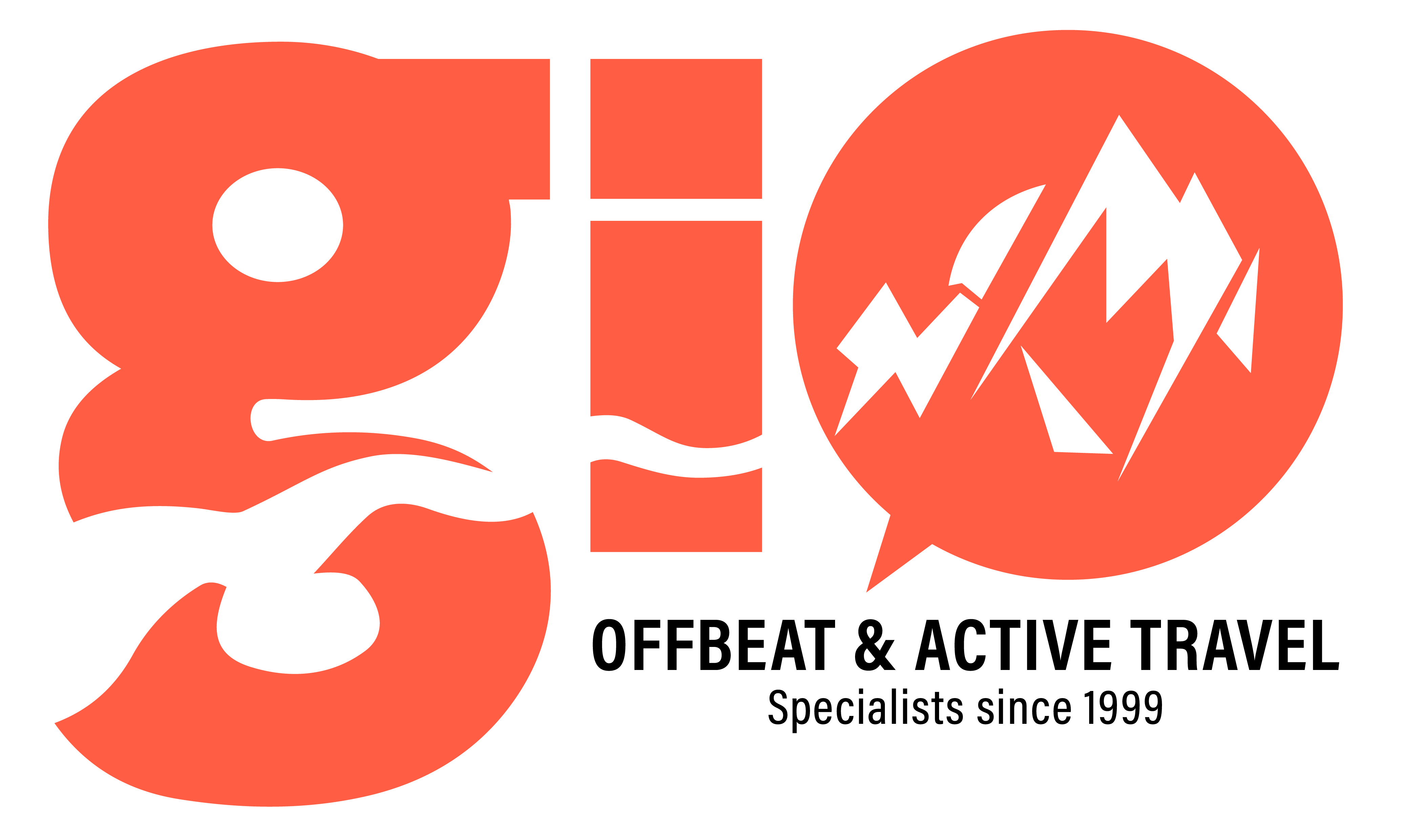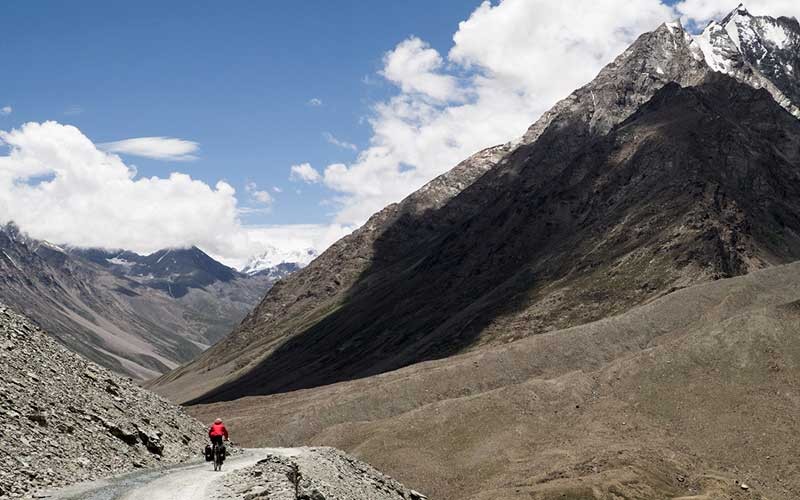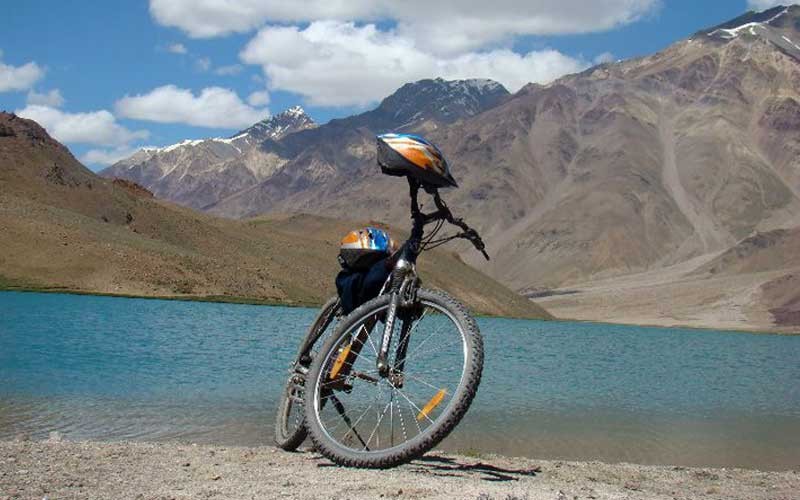- +91-7895979211, 7895979208
- LOGIN

MANALI TO CHANDRATAL RIDE
- Region - Uttarakhand
- Base Camp - Manali
- Duration 5 days
- Altitute 4300m
- Stay Rooms/Tents
- Difficulty Moderate+
Detail itinenary
We will all meet in Manali and check into a hotel. In the post lunch session we will get our cycles out and go for an acclimatization ride around Manali. Not only do we get our muscles ready for the ride ahead but we also feast our eyes on the natural delights for which Manali is famous. Overnight in the hotel.
Today after breakfast we will set out on the road leading to the famous Rohtang pass. This road is the one which goes to Ladakh and Lahaul & Spiti regions. It’s an uphill ride all the way and we will do it in short stages. We will have lunch enroute and reach our destination, Marhi towards late afternoon. Marhi is 16 kms short of Rohtang Pass. We will camp here for the night. Overnight in tents.
Get ready for your first views of the Trans Himalayan ranges today. After breakfast a climb of 16 kms will bring us to the top of Rohtang Pass (3900m) which offers rewarding views of the Pir Panjals and the Trans Himalayan ranges. Rohtang pass at 3950m separates Kullu, from the exotic charm of the Lahaul valley. In Tibetan Rohtang means "a heap of dead bodies" and the pass stands true to its notorious name. Every year it must take toll of life and property. This is so because after 11:00 a.m. sudden blizzards and snow storms called Biannas are only to be expected. The pass becomes all the more hazardous to negotiate due to frequent avalanches.The summit of the pass turns into lush green meadow in summers studded with violets and varieties of wild Himalayan and Alpine flowers. Butterflies of numerous and rare kind and variegated hues also draw the attention of' the visitor.
At the highest point on top to the right as one faces Lahaul, is a small stone enclosure and a water spring which is the principal source of the River Beas; .the other, Beas kund is at the head of the Solang nullah. The place gained religious significance because of sojourn of Beas Rishi (the famous Vyasa Rishi, author of the epic Mahabharata). To the left of this pass is the little lake Sarkund. On the 20th Bhadon (early September) every year a large number of people visit this lake with the belief and hope that an early morning bath in it will cure all their ailments.
From Rohtang Pass we will descend 11 kms to Gramphoo from where a left diversion will get us into the Spiti valley. The offroad starts from here and riding another 21 kms will get us to Chotta Dharra. Overnight in tents.
This is Glacier country. We trace the course of the Chandra river till Batal (19 kms) through undulating road, trying uphills and rocky flats. The gruesome climb begins from Batal diversion up to Chandratal. From the base of Kunzum Pass the pristine lake is 20 kms. Though the ride is going to be demanding today but rest assured you will be treated to sights never seen before. For people not wanting to ride a certain section the support vehicle is going to be there to hitch a ride. Upon reaching the lake we set up camp. Spend rest of the day soaking in the natural beauty of this jewel in the mountains, Chandratal. Overnight in tents.
Today after breakfast we drive down to Batal and from there drive further 12 kms towards Kaza and reach the Kunzum La at 4650m. We will spend some time at the pass taking pictures and enjoying the views all around. From Kunzum La we will again get on our cycles and enjoy a downhill ride till Batal and further on to Chotta Dharra, if so desired. We will have lunch here and drive back to Manali via the famous Rohtang pass. Our trip end here. One is free to stay back or proceed with the onward journey by taking an evening Volvo for Delhi/Chandigarh. If required we can arrange for accommodation in Manali at extra cost.
Trip Detail
If you are looking for a short & challenging ride with panoramic Himalayan views then this is the ride for you. Though short on duration this one doesnt lack grandness in any way and takes one riding on a memorable trail through a high altitude region, leading to a true jewel in the mountains, Chandratal lake.It is pristine, grand and ethereal. Thats Chandratal Lake at an altitude of 4300m, fed by glaciers and revered by all, located in the cold desert of the Spiti valley. Every year the lake is out of bounds for seven months and the lucky ones can visit only once the road opens in last week of May to be closed in September.
At a distance of 123 kms from Manali, the Chandratal Lake has many a legend attached to it, one being that fairies often descend from the heavens to dwell in its serenity. Well we dont know if we will run into them or not, however one sight which will resonate forever is the Full Moon night at Chandratal.
The ride from Manali to Chandratal is breathtaking and for the novice can be tough; nevertheless rewarding. Its an experience which will resonate for years to come and camping by the Chandratal Lake surely does awaken your senses to a higher realm. A perfect monsoon getaway ride for that quick unwinding unlearning. Read on more for details.
Departure Dates
Departure Dates
Reviews
16,500 *5% GST Extra
PAYMENT TERMS & CONDITIONS
- All payments for the trips, transfers, porterage, etc. should be made in full before the trip starts.
- Cancellation Policy: In the event that you need to cancel your booking due to any avoidable or unavoidable circumstances:
- We must be notified of the same in writing. Cancellation charges will be effective from the date we receive the request in writing. Any cancellation sent on a Sunday or any National Holiday(s), will be considered on the next official working day.
- Payment for this trip will not be adjusted towards any future trip(s)
- In the event of any cancellation(s) after trip commencement, there will be no refunds and any costs incurred due to this cancellation will be borne by you.
- Irrespective of when a trip is booked, the above condition will hold true
- Cancellation charges will be as follows
- >45 Days: Full refund (after deducting any expenses that have been incurred for hotel bookings, transport, etc.)
- 30-45 Days: 75% of trip cost will be refunded (after deducting any expenses that have been incurred for hotel bookings, transport, etc.)
- 15-30 Days: 50% of trip cost will be refunded (after deducting any expenses that have been incurred for hotel bookings, transport, etc.)
- <15 Days: No refund
VITAL INFORMATION
WEATHER DETAILS
This snow trek is organized between Dec & mid-March when the region has had good snowfall. Contrary to the popular belief winters is a good time to be in the mountains if one is equipped properly. Most locals inhabiting higher reaches of the mountains don’t mind the problems associated with snowfall and seem to have a good time during these months. Also there are lots of local festivals in these months. In these months weather is generally clear most of the days. Day time is normally pleasantly warm with one getting to enjoy sitting out in the sun. Temperature would be around 12-17 °C. Evenings are quite cold and one would need to be inside a tent/room or sitting outside next to fire with proper winter clothes. The evening temperatures will be around – 3 to 5 °C. Nights can be very cold with temperatures in the range of – 8 to 0 °C.
Please keep in mind that the above information is not exact and does not account for sudden changes. Whatever the temperatures and conditions rest assured we will be prepared to handle it with ease as we use equipment of very high specifications.
LIST OF ESSENTIALS
It is very important for this adventure trip that you need to be equipped properly and with a bit of back up. Mountain/adventure travel requires one to be adequately equipped with the right kind of personal gear. Since one is travelling in the wilderness there will be hardly any opportunity to buy anything once you hit the trail so we urge you to carefully pack everything into your bags.
- T-shirts (Full) – 2/3
- Warm shirt/light micro fleece pullover/full sleeve T shirt
- Trekking Pants (water resistant/repellent & having inside lining for extra warmth) - 2
- Windproof/water resistant outer shell (jacket) of good quality (no flimsy wind cheaters please!) with a proper hood
- Down jacket with min 600 fill power rating
- Thick Fleece / Full-sleeve Woollen sweater
- Thermal inner wear (upper & lower)
- Woollen cap (Balaclava)
- Inner fleece gloves
- Outer water proof gloves
- Thick woollen socks & regular socks (4 – 5 pairs)
- Scarf/muffler (optional)
- Comfortable waterproof (Goretex) Trekking/Hiking shoes (shoes with a thick sole and high ankles are recommended)
- Camp shoes (these can be easy to slip in sneakers/sport shoes)
- Gaiters
- Raincoat / Poncho
- Small light weight towel
- Insulated water bottle & hydration pack (optional)
- Cap / floppy hat to keep the strong sun away from your face
- Sun glasses with UV protection and ability to cut the glare (imp when traversing through snow)
- Sturdy walking stick / Trekking pole
- Sunscreen Lotion
- Lip Balm
- Torch / Flashlight (with extra batteries)
- Medicines, if requiring any specific medication
- Personal toiletries
- Book, if you like reading
- Day pack/small bag which you will carry on your back every day and keep your essentials in it
- Carry rain cover for your bags
- Keep a few poly bags or waterproof bags in your bag in which if required you can put your belongings in case of heavy rain
- Camera if you like (with fully charged batteries)
- …LOADS OF ENTHUSIASM!! AND A PLEDGE TO LEAVE NO TRACE
Carry your stuff in a duffel bag, soft shoulder bag or a rucksack. Avoid suitcases, trolleys or any other hard luggage. As you will be walking long distances carrying a rucksack, avoid bringing unnecessary items on the trek. Please avoid carrying expensive watches, jewellery and electronic items on the trek.
NOTE: In case you are planning to put your bag on a mule or taking a porter please get a duffel bag or rucksack and keep it in mind that there is a possibility that the bag at times might brush against a rock or a tree and get slightly damaged so don't get very expensive bags. Also in case of damage we shall not be held accountable.
TRANSPORT OPTIONS (DELHI – DEHRADUN – DELHI)
For travel to Dehradun/Haridwar/Haridwar, one can choose between air, rail & road. For air travel, the closest airport is the Jolly Grant Airport (Dehradun) and is well connected to Delhi and other parts of the country by Air India, Jet Airways, GoAir & Spice Jet. Train travel is highly recommended with enough options being there. For train details, you could log on to www.indianrail.gov.in and for online railway ticket bookings you could log on to www.irctc.co.in.
There are frequent Public Transport buses including Volvos available from Delhi to Dehradun that cost about Rs. 300 - 800 per person. These buses depart from Delhi ISBT every 30 mins to 1 hr or so and take about 4/5 hrs to cover the distance. The same is also applicable on the return journey. A private vehicle could also be arranged for if you require the same.
OUR TREKKING CODE
We are mountain lovers and have pledged to bring no harm to them in our pursuit of running organised wilderness travel in the Himalayas and seek your assistance too in this regard. We are more than convinced that one can have more fun on a trip if we go about it in a way that no harm is caused to the ecology. In this regard we have a set of guidelines that we adhere to based on the tenets of 'Leave No Trace' & 'Tread Light' policies. These guidelines are very simple and emphasise on travelling in small groups, better planning, understanding impact of camping, proper waste disposal, respecting local cultures, sensitivity towards wildlife and so on. We have a complete section on our trekking code in the 'GIO trekking Manual'. This manual will be couriered to you once you confirm a trip with us.
ACCLIMATISATION & HIGH ALTITUDE SICKNESS
This is one of the most important aspects of traveling in the high Himalayas and cannot be ignored or set aside. Acclimatization basically means our body adjusting to lower levels of oxygen (rarefied air) & reduced air pressure as me move up. In case one does not acclimatize properly there are chances of the person facing extreme discomfort and this can be fatal in extreme cases. While there is no set route to getting properly acclimatized there are general precautions and steps that one can take to initiate good acclimatization. Our trekking guides will assist you with these steps and also once you book a trip with us the 'GIO Trekking Manual' which will cover this aspect extensively will be couriered to you. This is sure to help you enjoy the trek in very good shape.
SELECTING THE RIGHT TREK & TRAINING FOR IT
Most important thing is to select the right trek keeping in mind your experience or inexperience, health, objectives & ability. Our senior team people can assist you with this, so when contacting us do mention if you need guidance on this front also refer to our trek grading system mentioned below. Once the right trek is selected comes your preparation. Once you have booked a trip with us we will courier the 'GIO Trekking Manual' to you which will have a complete practice drill explained in detail.
TREK GRADING SYSTEM
We have broadly classified our treks as below:
Easy: These treks are 3 to 5 days long and involve walking for about 3/4 hrs daily. The trail on such treks is well defined but not always flat. These are great for families and first-timers
Moderate: On these treks, one is not required to trek for more than 5/6 hrs a day. Also the terrain is not too difficult. These treks are normally a week or so long. For these treks, prior trekking experience is not necessary. Very rarely on these treks would one camp at altitudes higher than 3800m. These treks are great for first-timers or for veterans wanting to go on a trail which is relatively less demanding
Moderate+: These are moderate treks with mostly one difficult day. These trails are fine for fit beginners also.
Vigorous: On these treks one can be required to trek continuously for more than a week through remote areas and at times trekking for more than 7 hrs a day. On most of these treks one has to cross passes or areas which are snow-covered and involve camping at an altitude of more than 4000m. Fit people with some kind of hiking experience & a spirit of adventure can contemplate going on these trails.
Strenuous: These treks apart from having continuous trekking stretches are at places technical and might require assistance from trip leader/guide and other staff people. All these treks have rest days in between. Also, all of them involve crossing passes or areas having an altitude of more than 4500m. First-timers are discouraged from walking such routes.
Expedition Style: These involve long walks at high altitudes at times around 6000m. Camping can also be well over the snow line and on glaciers at times. Safety ropes, ice axes, and crampons might be required on these treks. These treks are not technically very difficult but are considerably challenging. Previous vigorous/strenuous trekking experience is required.
DISCLAIMER
Great Indian Outdoors (P) Ltd. takes utmost care to ensure the safety of its clients. However, in the case of any unforeseen mishaps, Great Indian Outdoors (P) Ltd. will not be liable for any injuries caused or for loss of life. All disputes rising due to the above are subject to the jurisdiction of the courts in New Delhi/Delhi only. All participants would be required to sign an Indemnity Form before the start of the program, without which they would not be allowed to take part in the trip/program/activities.
Recognised by Ministry of Tourism, Government of India as an Approved Adventure Tour Operator
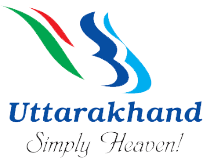
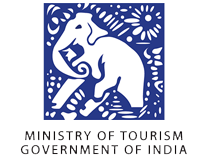

Contact Us
 GIO Adventures Pvt. Ltd
GIO Adventures Pvt. LtdDehradun - Uttarakhand
- +91-7895979211
- info@gio.in
